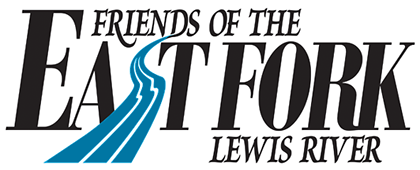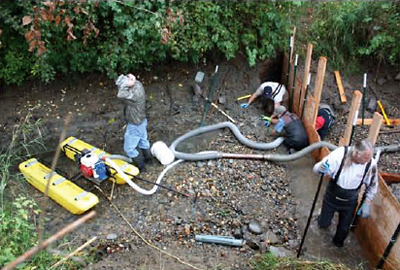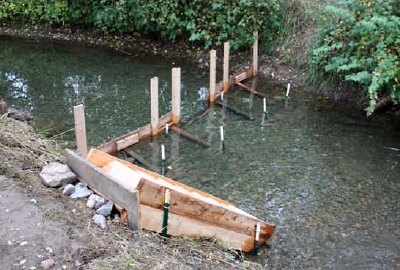East Fork Lewis River, Swanson Chum Channel, One Link in Increasing Nutrients and Salmon Returns
Restoration or improvement in salmon and steelhead returns on any stream including the East Fork Lewis River are like links in a chain. Healthy links in the habitat chain include nutrient rich waters, good hiding and rearing cover, stable spawning gravel, cool deep holding pools, moderate stream temperature and oxygen levels, critical summer flow levels. The East Fork is deficient in all of the links that make a healthy river system. The Swanson Chum Channel is designed to help improve the nutrient link in the chain.
The Swanson Chum Channel spawning bed has the special upwelling groundwater conditions needed for chum. Adult chum carcasses in the past were a major nutrient source for all the other salmon species.
Chum fry leave the spawning gravel area not long after their egg sac is used up, whereas other salmon and steelhead species stay in the river, grow to juveniles, and migrate later as smolts.
In December over 800 cedar trees were planted by Clark County Corrections Juveniles and other volunteers. Hay bales were spread and new grass seed was planted on the project site and along the river last fall, has grown quickly. 100,000 chum fry will be planted in late February and early March. 10,00 additional fry will be reared at Dave Brown’s Northwest Wild Fish Rescue facility on Mill Creek and will be released in late winter.
To do all we can to make this fish restoration project successful over time, the chum channel will be continuously monitored and maintained by BPA, WA F&W, and Fish First. If successful, returns of adult chum would appear in 3 years.
This project is the result of the funding, teamwork, and support of Bonneville Power, WA F&W and Clark County Conservation; along with the highly motivated cooperation and field work between Fish First, the Swanson Family and many volunteers from various conservation and habitat groups.
Volunteers interested in restoring our rivers and helping save our endangered wild and native salmon and steelhead contact: (360) 887-0866 or (360) 597-3061.



